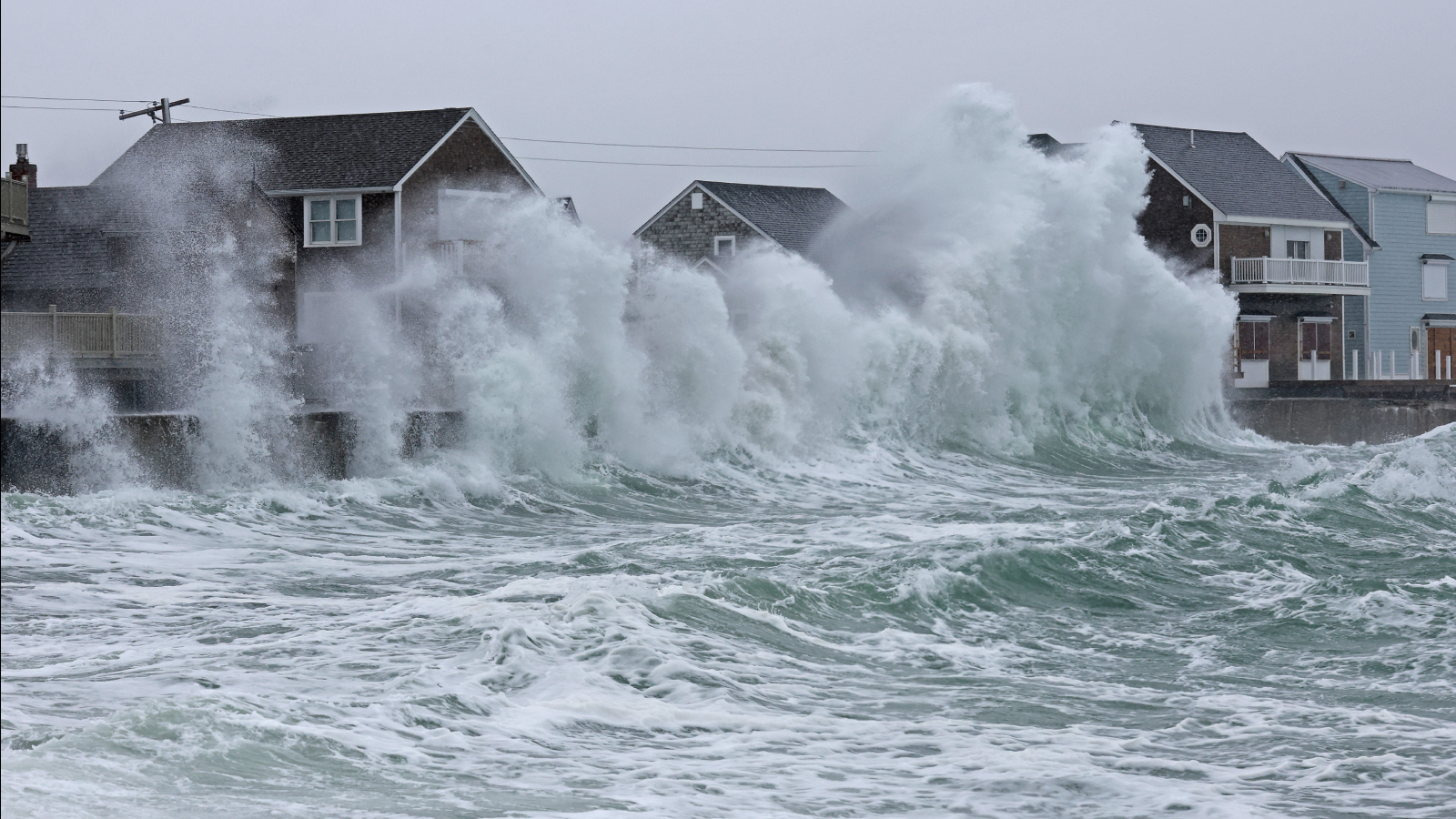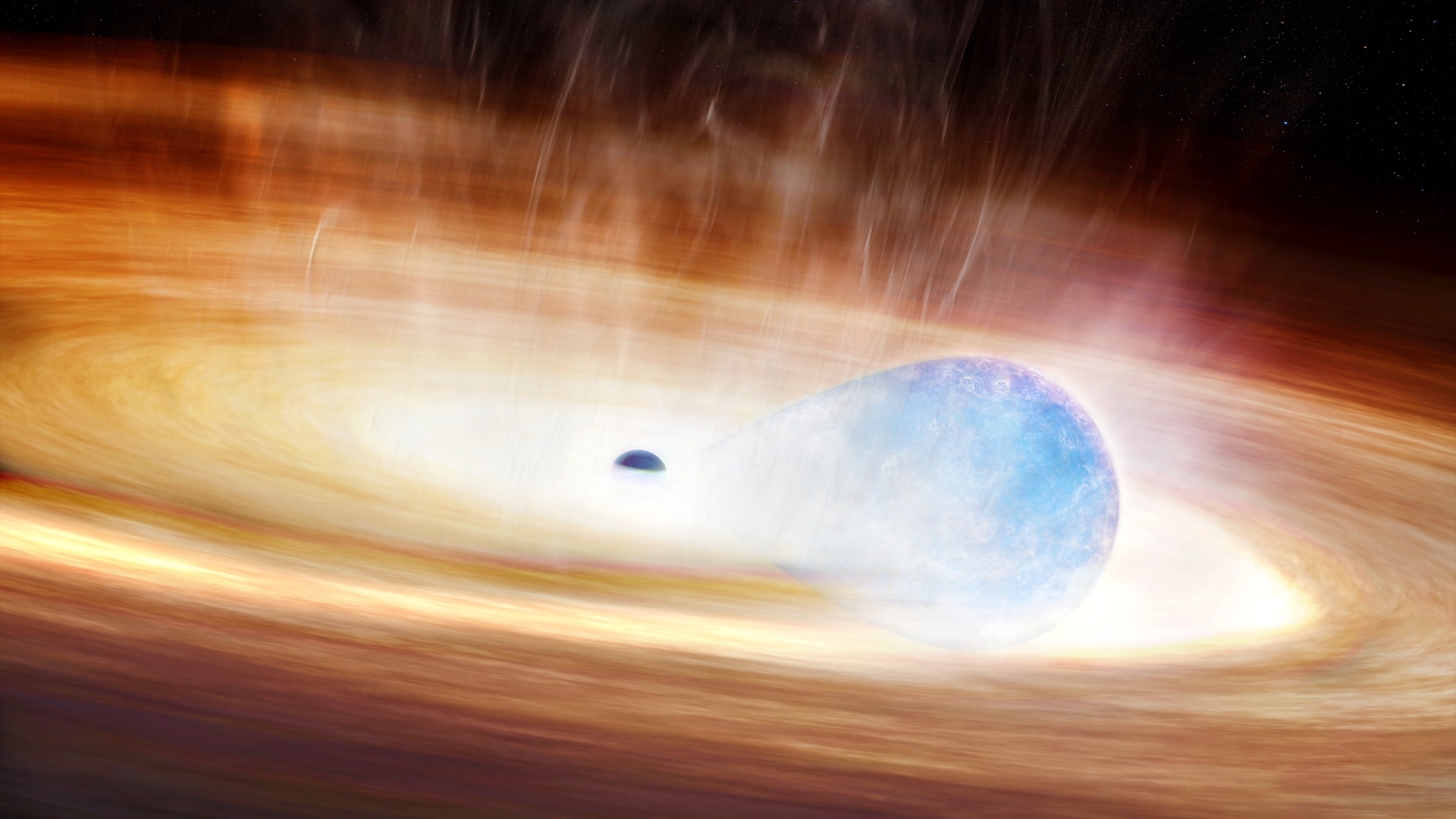The strongest nor’easters — a type of North Atlantic storm that can produce devastating impacts along the U.S. East Coast — appear to be intensifying as the world warms, a new study finds.
Researchers found that the maximum wind speeds and hourly precipitation rates of the strongest nor’easters have increased since 1940.
The trends identified have “profound implications” for people living across the eastern coast of North America, given that these storms bring damaging winds, heavy snowfall and significant coastal flooding, the researchers reported in a paper published July 14 in the journal PNAS.
“While there is no apparent trend in the average intensity of nor’easters, we found that the strongest nor’easters — which do the most damage and have the most impact — are indeed getting stronger,” study co-author Michael Mann, a presidential distinguished professor in the Department of Earth and Environmental Science at the University of Pennsylvania, told Live Science.
Nor’easters are a type of extratropical cyclone (ETC) — storms that originate outside the tropics — that form along the U.S. East Coast, particularly during late fall through early spring. These storms often cause severe damage and societal disruption because they tend to pass over densely populated regions, such as the Boston, New York and Washington, D.C. metro areas.
Some of the most infamous nor’easters include the “Perfect Storm” in 1991; the “Storm of the Century” in 1993, one of the deadliest of these events on record, which claimed 208 lives; “Snowmageddon” in 2010; and the January 2018 blizzard.
Related: La Niña is dead — what that means for this year’s hurricanes and weather
Given the potential consequences, it is crucial to understand how nor’easters are changing in response to human-caused climate change, the authors said. Yet nor’easters have traditionally received far less attention from climate researchers than tropical cyclones have.
And while there is a general consensus among climate scientists that ETCs will likely decline in frequency as arctic warming decreases the temperature gradient between polar and subtropical regions, there is less agreement regarding potential changes in the future intensity of these storms.
In an attempt to address some of these outstanding issues and challenges, Mann and colleagues set out to create a “virtual atlas” of nor’easters that could serve as a reliable historical database of these storms, he told Live Science. The study involved applying a cyclone-tracking algorithm to a climate dataset covering the period from 1940 to the present.
Using this approach, the team identified 900 nor’easters over this period — an average of around 11 per year. The researchers then looked at trends over time, focusing on two key storm characteristics: intensity, as measured by peak sustained winds, and the average precipitation per hour.
They found only a very small, statistically insignificant increase in the average intensity of all nor’easters over the study period. But among the strongest storms specifically, the authors observed a trend of increasing intensity over time — and the stronger the storm, the more pronounced that trend appeared.
For the most intense nor’easters — those in the top 1% — the researchers observed an increase over the 85-year study period from peak wind speeds of around 69 mph (111 km/h) to roughly 74 mph (119 km/h). This is an increase of about 6 percent, which might seem modest — but Mann said it corresponds to a “sizable” increase of roughly 20% in the destructive potential of these storms.
The trends the researchers observed regarding intensity and precipitation rates among the strongest nor’easters have likely been driven by increases in ocean temperatures and the higher capacity of a warming atmosphere to hold moisture, according to the researchers.
Allison Michaelis, an assistant professor in the Department of Earth, Atmosphere, and Environment at Northern Illinois University who was not involved in the PNAS study, told Live Science that the latest research adds “important” context regarding historical nor’easter trends.
“Previous studies that have examined nor’easters, or East Coast storms more generally, are more limited in scope,” she said. “The most practical implication, as noted by the authors, is the potential for an increased risk of coastal flooding along the East Coast,” which would directly impact people, property and infrastructure in the region.
Counterintuitively, stronger nor’easters may also raise the possibility of increased winter cold-air outbreaks in inland regions along the U.S. East Coast. This is because these storms can pull cold air down from the North, as was the case in the Mid-Atlantic region with the January 2018 blizzard.
“The potential for greater likelihood of future super-nor’easters, akin to the 1993 Storm of the Century and Feb 2010 Snowmaggedon … portends prospects of paralyzing snowfalls, dangerous storm surges, and episodic cold extremes, underscoring the urgent need for coordinated efforts to assess and mitigate the devastating impacts of future such storms,” the authors wrote in the paper.
Edmund Chang, a professor in the School of Marine and Atmospheric Sciences at Stony Brook University who was not involved with the study, told Live Science the latest research was largely well conducted, with the data supporting the conclusions.
Previous studies published by Chang and colleagues have predicted that there will be an increase in the intensity of storms close to the northeastern U.S. under warming, meaning the number of strong storms is projected to increase over that region.
“The results of [the PNAS] paper are consistent with those projections, but might suggest that the proposed increase in storm intensity over this region is appearing earlier than climate models predict,” Chang said.














